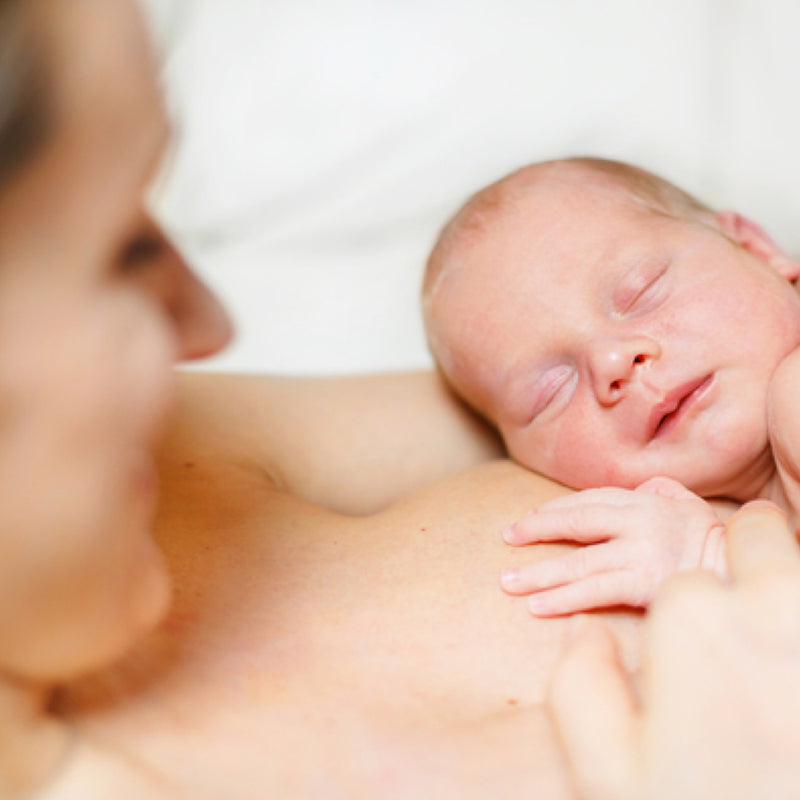Key Points:
- Mothers can indeed produce enough milk for twins, with supply meeting the demand through either tandem feeding or feeding one baby at a time with support.
- Proper positioning and attachment for tandem feeding can be aided by using a tandem-feeding pillow and various setups to manage both babies comfortably.
- Implementing a feeding schedule where both twins are fed together can help establish a routine, while expressing milk is often necessary, especially for pre-term twins.
- While breastfeeding twins may require more effort initially, with the right support and techniques, it becomes easier, allowing for flexibility in feeding positions as the babies grow.
Breastfeeding can be a tough skill to learn, let alone navigating breastfeeding two babies at once. But, with the right support, it’s a challenge that is definitely do-able.
Will I have enough milk for two babies?
When a mum finds out she’s pregnant with twins, her first thought may be ‘will I have enough milk for two babies?’ and the answer is a resounding ‘yes!’. Supply is all about demand, the amount a woman’s baby—or babies—takes is how much her body will make. Some twin mummies have breastfed one baby before, but worry about feeding two — getting a correct latch just one was hard, is it possible to attach both in tandem-mode?
What about having time for their own sleep in between the constant suckling required from newborns to bring in and maintain the milk? This is when at-home help is paramount. The practical help a partner, grandparent or other close friend can give, is a gift like no other.
Support with housework, washing, cooking meals, looking after older children or just being an extra pair of hands to hand babies to their mum when she’s sitting down and ready to feed is a huge help.

Initiating Breastfeeding
If your twins are born at 37 weeks or later, frequent feeding can help your milk supply come in within approximately 72 hours, much like it would for a single baby. The added stimulation of two babies nursing often leads to a double milk supply. If you feel comfortable, ask your midwives for assistance with positioning and attaching your babies for tandem feeding, which allows you to feed both babies simultaneously.
Using a Tandem-Feeding Pillow
A tandem-feeding pillow can be a lifesaver for twin mums, providing a firm surface to support both babies while keeping your hands free for adjustments. To make feeding more manageable, consider using cloth nappies or baby wraps to wedge under your babies’ heads or bodies, giving you a moment to tend to one baby’s latch if needed.
With practice, tandem feeding can significantly reduce feeding time and provide you with more opportunities to rest. Many mums find tandem feeding so effective that they can even multitask, such as reading a book while nursing, once they get the hang of it.

Positioning Twins for Feeding
Getting twins ready for feeding without help can seem daunting, but there are effective methods to make it easier:
- Couch with Baby Rockers: Place two baby rockers in front of you, lean forward to pick up one baby at a time, or feed one while rocking the other with your foot.
- Side Pillows Method: Position pillows on either side of you, place the babies on the pillows, then lift each one onto a breastfeeding pillow on your lap.
- Shoulder Lean Method: Rest each baby over your shoulders, sit down, grab your feeding pillow, and use gravity to help lower the babies onto the pillow.
With time and practice, you’ll find a setup that works best for you and your little ones.
Do My Twins Need a Schedule?
As for routines, I usually don’t emphasise scheduled feeds with singletons and encourage demand feeding, so just to feed when baby wakes. However, with twins, many mums find treating them as one baby works well. So if one wakes ready for a feed, they wake the other and always feed together until they fall into this pattern naturally.
Do I Need to Express?
Expressing milk for twins is much more commonly required than it is for one baby. With one bub, I encourage mums to wait until they feel their breastfeeding is well established before introducing expressing but with twins, there often isn’t this choice. If the babies are born pre-term and unable to regularly feed from the breast, mums will need to express their colostrum and bring their milk in with hand expressing and usually maintain it with a pump until babies are ready to breastfeed.
A double electric pump is the best way to go here – whether it’s a hospital-grade rental at first, or invest in a quality personal-use pump, new mummies need to express as often as one would be breastfeeding, and most newborns feed as frequently as 8-12 times in 24 hours!
Once the babies are ready to feed directly, it can still be quite a process to entice them over to breastfeeding, especially if they have needed to use any bottles or other feeding devices before they go to the boob. I would certainly enlist some professional help here — regular sessions with a lactation consultant, or hospital breastfeeding clinic would be ideal.
Getting Extra Support
Partners, grandparents or friends, are often a great help ferrying mums to and from appointments or being an extra pair of hands during sessions.
Expressing for twins is a round-the-clock job, even if bubs are in the special care nursery or mum is discharged from hospital before her babies, and needs ongoing support at home to maintain. If your ‘support team’ are up to date on how to store the precious breastmilk (or transport to the hospital) it can help too.
Milk can stay at room temperature for 6-8 hours under 26˚C, then it needs to be refrigerated (and stay cool with an ice brick if travelling). It can stay in the fridge for 72 hours or in a freezer for up to 3 months, or 6-12 months in a deep freeze. Label breastmilk with the date it was expressed.
Milk for feeding can be warmed by sitting in a bowl of hot water until body temperature. Frozen milk can be thawed overnight in a fridge and used within 24 hours.
Breastfeeding Challenges
If babies need to be tube fed or bottle fed in hospital, or need top-ups from a cup, syringe, bottle or supply line, this is when the expressed milk is used. Your hospital midwives, special care nurses or lactation consultant will be paramount in making sure mum’s wishes to breastfeed are supported, with the eventual aim to wean off the extra top-up feeds when bub is physically able.
It may take a bit longer to establish breastfeeding with twins, but once you and your babies are managing well, like any skill, it gets easier and easier. Babies get quicker and quicker at feeding, too, so feeding one at a time doesn’t take up as much time as it used to.

As a lactation consultant, I form such a strong bond with all my twin mums (they are a determined bunch!) and many come back to me periodically for help with things like managing tandem holds as babies grow and get bigger.
As newborns, many mums start out with the double football hold, but as they grow and gain more head control, there’s many holds that can be managed without using a special pillow (some are the V-hold, parallel hold or even double koala hold), which means breastfeeding twins can be managed outside the home environment, at the park, cafes, restaurants, anywhere really!
Written for Nourish Baby by Simone Casey, ICBLC and volunteer breastfeeding counsellor with the Australian Breastfeeding Association.
Our Products
-
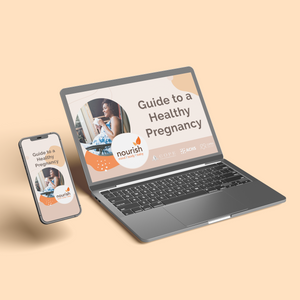
01. Guide to a Healthy Pregnancy
$55 -
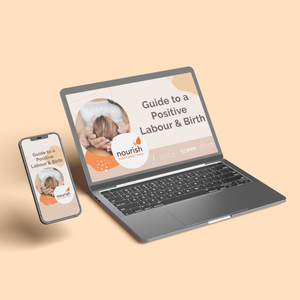
02. Positive Birthing Course
$55 -
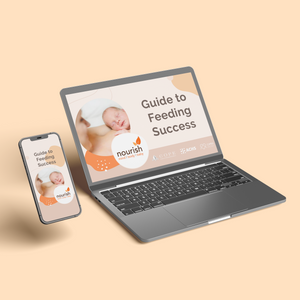
03. Infant Feeding Guide
$55 -
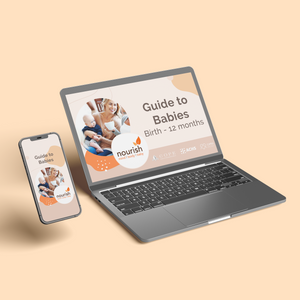
04. Baby Sleep Guide - First 12 Months
$55 -
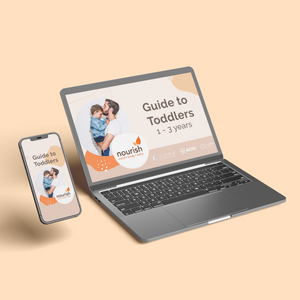
05. Toddler Parenting Course 1 - 3 Years
$55
-
 When to Start Antenatal Classes?
When to Start Antenatal Classes?
Becoming a parent is an incredible milestone, but it comes with a host of changes that can be daunting, especially for first time parents. Antenatal classes are all about offering expectant parents the education they need to make informed decisions, look after their bodies and care for their newborn babies. While you probably already have a long list of things you need to accomplish during your pregnancy, it’s a good idea to make time to attend antenatal classes.
-
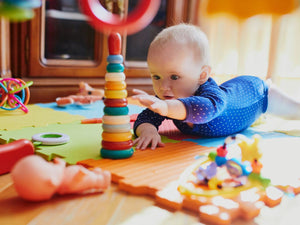 Development Milestones 4-8 Months
Development Milestones 4-8 Months
As they reach the middle of their first year, you'll start to see bigger leaps in their growth and ability!
In this article, we’re going to discuss your baby’s developmental milestones between 4-8 months, and what you can expect along the way.





 When to Start Antenatal Classes?
When to Start Antenatal Classes?
 Development Milestones 4-8 Months
Development Milestones 4-8 Months



